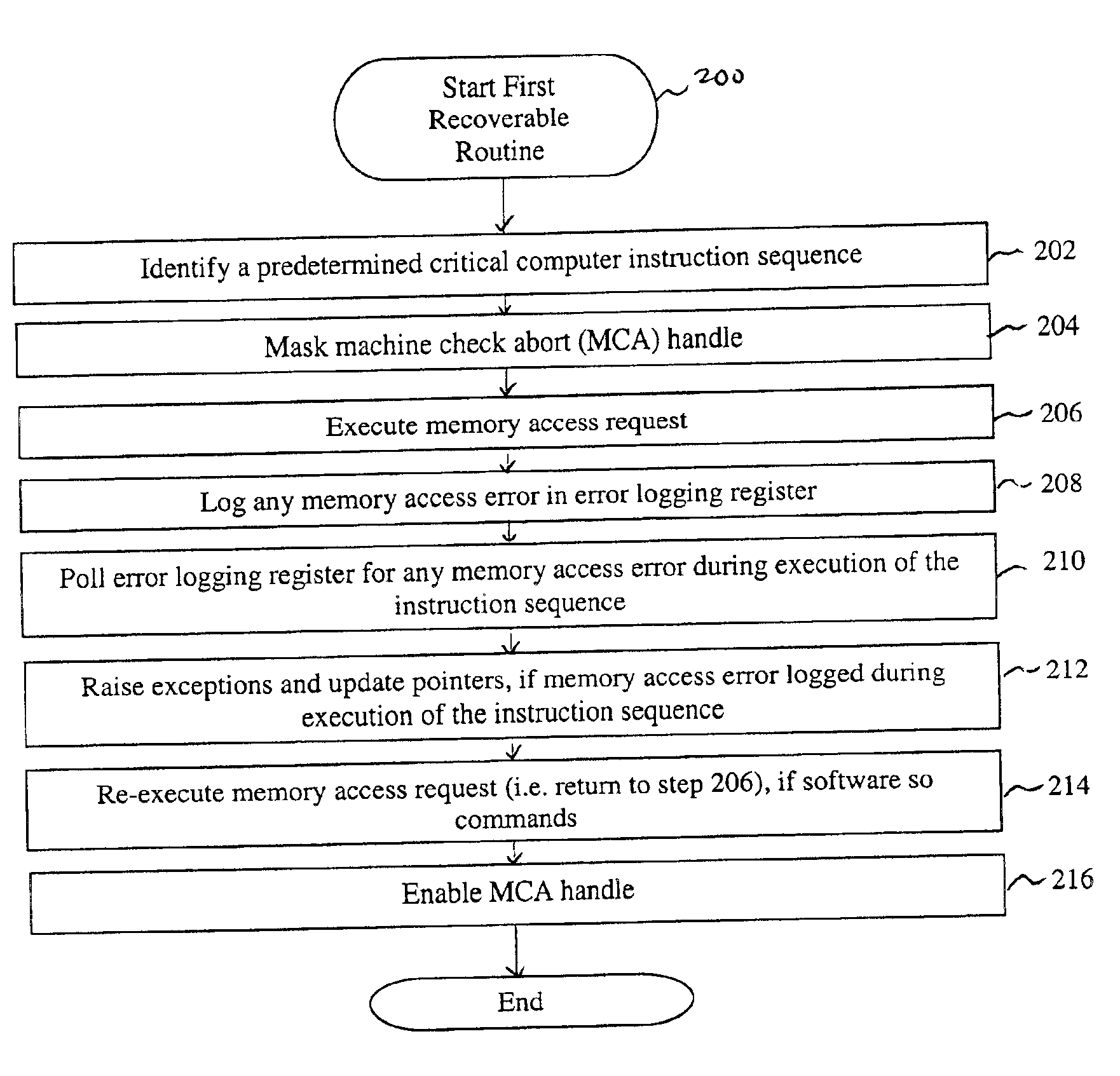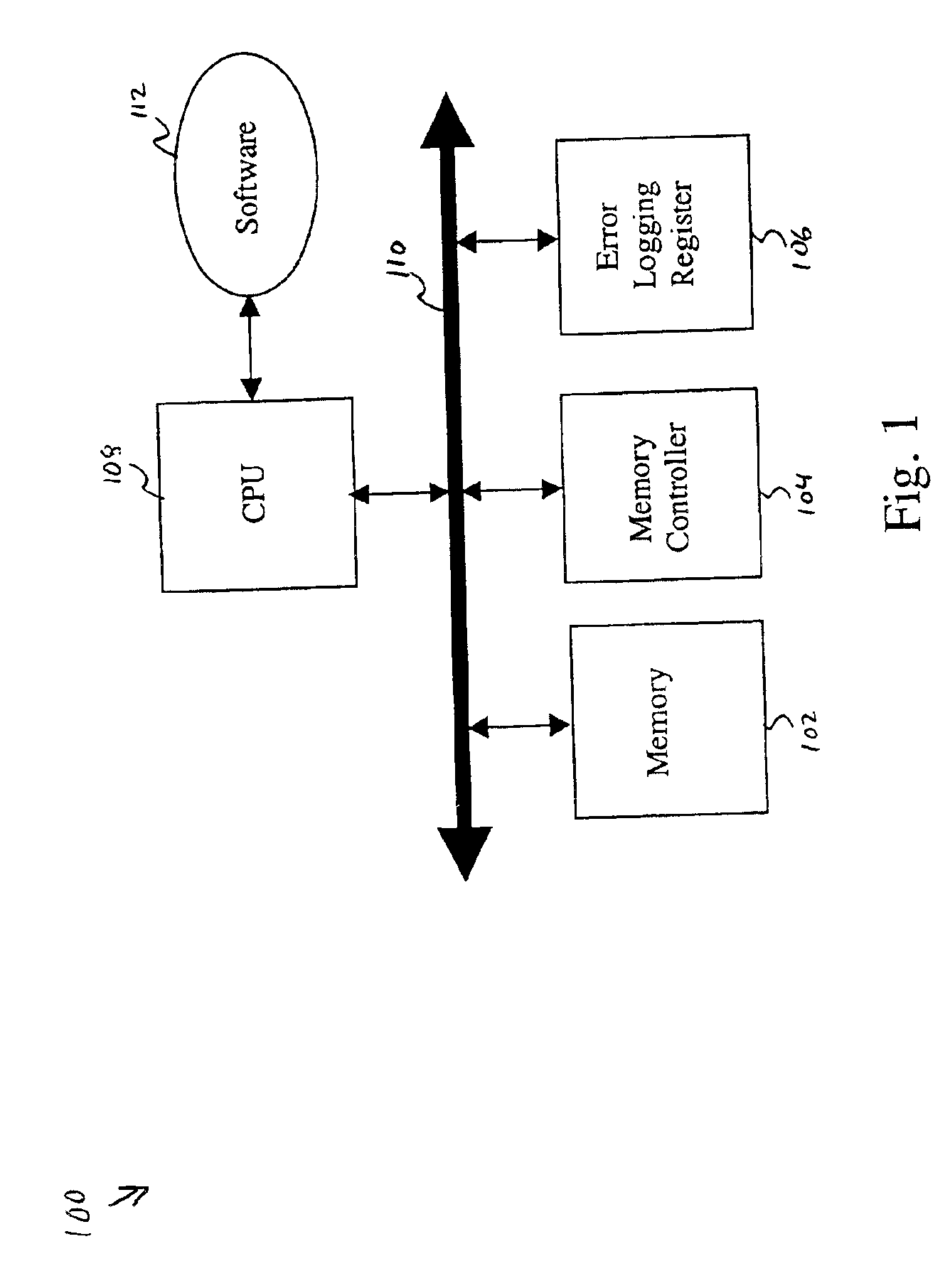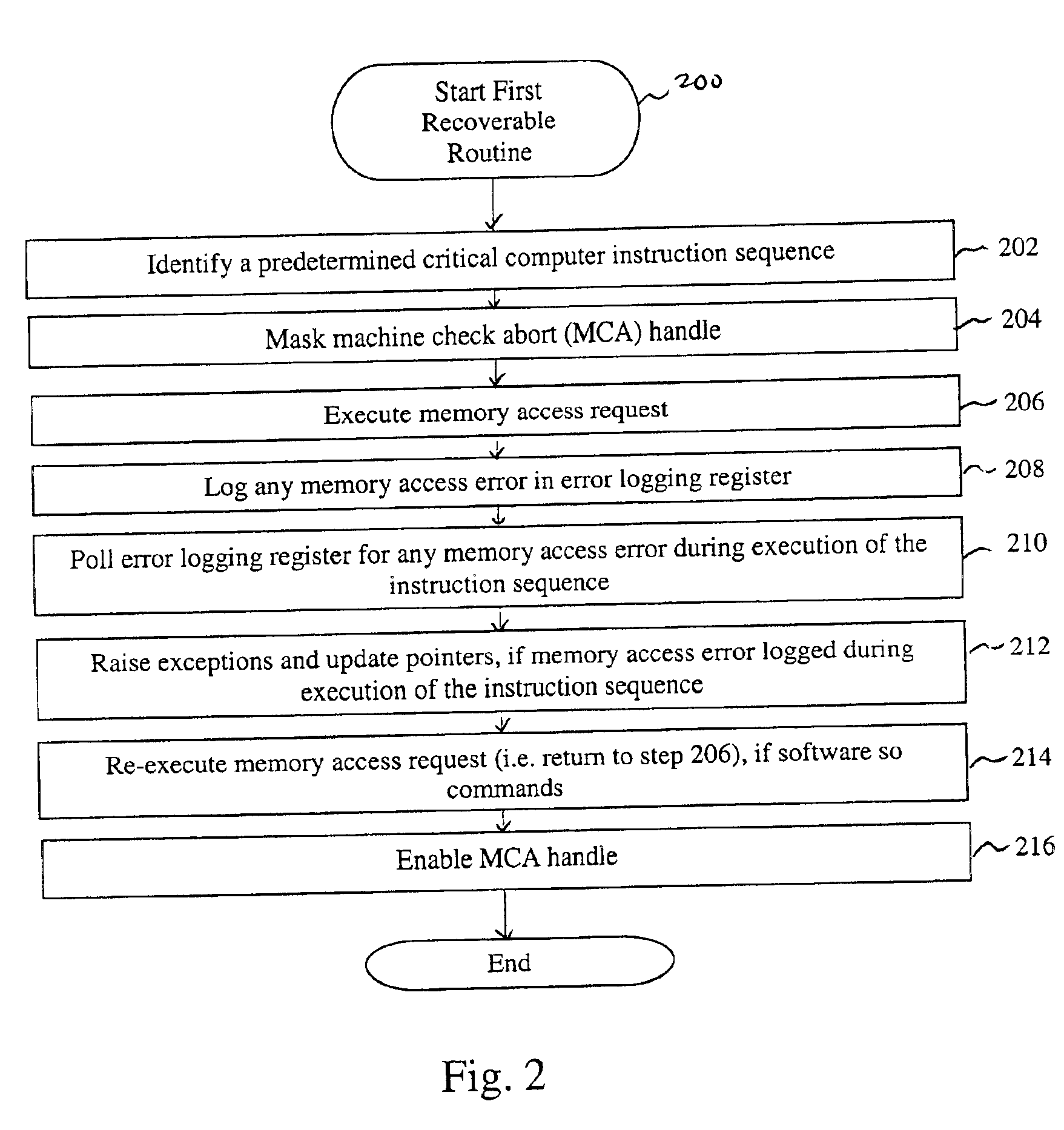System and method for recovering from memory failures in computer systems
a computer system and memory failure technology, applied in memory systems, error detection/correction, instruments, etc., can solve problems such as loss of availability, software (sw) errors and administration time, and certain other hardware (hw) errors becoming more probable, and achieve the effect of responding to memory errors
- Summary
- Abstract
- Description
- Claims
- Application Information
AI Technical Summary
Benefits of technology
Problems solved by technology
Method used
Image
Examples
first embodiment
FIG. 2 is a flowchart of a method 200 for recovering from memory access failures. The method 200 begins with step 202 where the software 112 identifies a predetermined critical computer instruction sequence about to be executed by the CPU 108, which includes a memory access request. The predetermined critical computer instruction sequence can be part of a set of instruction sequences, identified by the software 112 designer, for which error recovery is required. While the critical computer instruction sequence discussed below include a memory access request, those skilled in the art will know that concepts discussed with respect to recovery from a memory access request error can be applied to other recovery critical instruction sequences which would otherwise require rebooting of the system 100 to recover from. Thus, the present invention is particularly applicable to O / S level code which can not otherwise be restarted in response to memory errors without rebooting. When the present...
second embodiment
FIG. 3 is a flowchart of the method for recovering from memory access failures. The method 300 begins with step 302 where the software 112 identifies a predetermined critical computer instruction sequence about to be executed by the CPU 108, which includes a memory access request.
In step 304, the software 112 then checkpoints a predetermined set of system data necessary to recover should the memory access request fail. Checkpointing is component of a transactional paradigm in which permanent modifications to system data are not made until all associated operations within the transaction have been successfully committed. Thus if during a transaction, such as the memory access request, an error occurs, the system data stored during the checkpoint can be restored.
In step 306, the software 112 then instructs the memory controller 104 to mask any raised machine check abort (MCA) handle. In step 308, the CPU 108 executes the memory access request. The memory controller 104 logs any memory...
third embodiment
FIG. 4 is a flowchart of the method for recovering from memory access failures. The method 400 begins with step 402 where the software 112 identifies a predetermined critical computer instruction sequence about to be executed by the CPU 108, which includes a memory access request. In step 404, the software 112 then instructs the memory controller 104 to mask any raised machine check abort (MCA) handle. In step 406, the CPU 108 executes the memory access request. The memory controller 104 logs any memory access error in the error logging register 106, in step 408.
In step 410, the memory controller 104 sets data returned in response to the memory access request equal to a set of predefined fake data, if a memory access error is logged during execution of the instruction sequence. The software 112 has preprogrammed the memory controller 104 to perform the functionality described in step 410. By setting the returned data to the predefined fake data in when a memory access error occurs, ...
PUM
 Login to View More
Login to View More Abstract
Description
Claims
Application Information
 Login to View More
Login to View More - R&D
- Intellectual Property
- Life Sciences
- Materials
- Tech Scout
- Unparalleled Data Quality
- Higher Quality Content
- 60% Fewer Hallucinations
Browse by: Latest US Patents, China's latest patents, Technical Efficacy Thesaurus, Application Domain, Technology Topic, Popular Technical Reports.
© 2025 PatSnap. All rights reserved.Legal|Privacy policy|Modern Slavery Act Transparency Statement|Sitemap|About US| Contact US: help@patsnap.com



